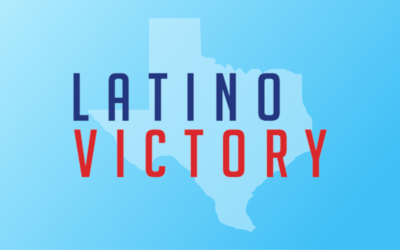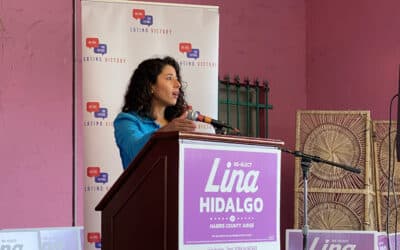On Friday, the Signal spoke to Mike Siegel, a former attorney for the city of Austin and one of 10 congressional Democratic candidates who came up short in flipping targeted Republican seats on Tuesday.
Siegel’s race with Rep. Michael McCaul in Texas’ 10th Austin to Houston district saw record-breaking turnout for both Democrats and Republicans, but the boost in new votes ultimately favored McCaul with a six-point win. Siegel first ran for Congress in the same district in 2018 and came within four points of unseating McCaul.
He was one of two candidates in Texas that ran on a progressive platform that included support for a Green New Deal and Medicare for All.
The following is an edited transcript of what Siegel told the Signal about the results of the race, how the presidential race and pandemic affected his contest, and what Texas and national Democrats need to improve their gains in the state and the district.
Your race was among those that had good polling and good fundraising numbers. What’s your best explanation for the victory McCaul saw?
Sure, I just want to describe how well we did first. Over 186,000 votes in Texas 10th. In a gerrymandered district, in a state with massive voter suppression, while running on a Green New Deal, Medicare for All, and a progressive platform that people recommended you don’t run on in Texas.
And we made nearly a million phone calls, nearly a million text messages — I mean a massive voter contact operation — and we actually outperformed numerous Democratic Congressional Campaign Committee candidates in Texas who had three, four, five times as much money (once you run independent expenditures).
So, we feel like we ran a really solid campaign.
But at the core, there are more Republicans in this district. It was gerrymandered that way. And we were surprised that some of the new voters and some of the so-called “low propensity voters,” came out and voted for the first time ever or for the first time in a long time to protect Donald Trump. That was something, frankly, I was surprised by. I didn’t think a first-time voter would come out to protect Donald Trump.
And so, I think the core lesson for Democrats in Texas, I hope, is that we still have more work to do to build the base, not just to spend a lot of money on the eve of the election on TV ads and mail to get out people who aren’t engaged.
We need to do the deep work, to create the conditions for foundational change. The work that they’ve been doing in states like Arizona for over a decade and that is bearing fruit now in places like Maricopa County [Phoenix, Arizona].
That’s the work that is ahead of us. I would say the work we’ve done in 2018 and 2020, in part led by folks like Beto and other people who are invested in voter registration and voter turnout — we’ve now picked all the low-hanging fruit. And so, now we need to plant new trees, to continue the imperfect metaphor.
I’ll give you one example. Eagle Lake. Have you ever been to Eagle Lake, Fernando?
No, I haven’t.
Eagle Lake is a rural town in Colorado County south of I-10. It’s a place that, for people who drive back and forth from Austin to Houston, it’s a spot that you pass, you know, you see the road sign when you’re driving through.
But when you go to Eagle Lake, you see that there’s a lot of Black folks, there’s a lot of Hispanic folks. And you also feel that the Texas Democratic Party has almost no presence there.
You have people who live through the Texas summer with no air condition — I mean this is across rural Texas. You have people who are in homes that are just completely falling apart. You’re in a town with a significant population but no early voting locations.
And in the Eagle Lakes across Texas, there are folks who should be Democratic voters, but they don’t feel the party, they don’t see us, they don’t understand or they don’t believe that the Democratic Party can help them. And until we do that work in the Eagle Lakes — you know, I’ve seen Jessica Cisneros make comments about the Rio Grande Valley — but even in the cities too.
There are more votes to be had, but we need to commit ourselves to spend some of this money that goes toward TV ads. I mean millions upon millions of dollars on tv ads! What if we invested one-third of that money on year-round canvassing to find new Democratic voters, instead of just trying to persuade these so-called swing voters.
That’s really interesting. I do want to talk a little about the top of the ticket, because I know there were a lot of Democrats, including the Texas Democrats Chairman Gilberto Hinojosa, who was more or less begging Biden to visit the state (which he had not visited since Super Tuesday) and invest more in the state. How much did the top of the ticket and their operation in Texas impact y’alls campaign?
With all due love and respect for Joe Biden, Kamala Harris, and MJ Hegar, neither the presidential nor the U.S. Senate campaigns had any significant presence on the ground in my district.
Did you do any events with Biden?
No, he endorsed me, but there was no opportunity for events. MJ did some Zoom events. But yeah, very little investment from the Biden campaign in Texas.
Obviously, we’re a massive state, so I mean, a few million dollars does almost nothing. And even the MJ campaign, not an investment in the field, not an investment in work on the ground.
And so for all the money that was spent, I’m not sure how much was actually accomplished.
For me, Joe Biden has a lot of messages that he’s been running on. But if he had invested in Texas and really made the case that he believes the federal government should put people to work, essentially the New Deal message — and it’s part of his platform on climate, jobs and other issues, he believes that the federal government should create jobs for working people.
And in a time when we’ve lost 50,000 oil and gas jobs since March, countless entertainment workers, hospitality workers, aviation workers who are unemployed in my district in TX-10 (I still think of it as my district). I think a message of using that federal spending power to create jobs, could have been persuasive. But unfortunately, we didn’t have that kind of support from the top of the ticket.
I’ve seen some blame being placed on the DCCC’s Red to Blue program too. Was there anything missing or performed poorly from national Democrats that affected your campaign, or what was your experience like being on that program?
I was added late and I appreciate all the support I got. I think between House Speaker Nancy Pelosi and the DCCC, approximately $400,000 was spent on my behalf by national Democrats, which is nothing to sneeze at. They spent 10, 20 times as much as other candidates in Texas.
And I tried to throw the needle, you know. I got support from Bernie Sanders, Elizabeth Warren, Alexandria Ocasio-Cortez, the Congressional Progressive Caucus, labor, the Sunrise Movement, DCCC and Speaker Pelosi. And so I tried to pull everyone together because I couldn’t waste a single vote or a single dollar of support.
But my challenge with the DCCC framework is that it’s so laser targeted and so poll-tested.
The recommendation is that you run on an issue like protecting pre-existing conditions or keeping drug prices low. In the scheme of things, it’s an extremely narrow issue. In districts like TX-10 where we need to inspire people who’ve never voted before, I don’t think it provides a clear enough contrast.
I’ll tell you, I would have preferred to run in this district on a ticket that had Bernie Sanders and Cristina Tzintzún Ramirez. Because Bernie was speaking to poor rural voters.
I need to get out some sorghum and rice farmers in Colorado and Fayette County. I need to earn the votes of some oil and gas workers in Giddings or Brenham. I needed some more of those folks who care about the Democratic ticket. And I needed Hispanic voters who are facing not only voter suppression but also the terrors of Senate Bill 4 and these raids and the Trump-Abbott immigration policies. I needed those folks to get out to win a race like this one.
When the Republicans are voting in force, we need to find new voters. I think that a progressive, populist vision from the whole ticket would have been much more helpful, than essentially a message of, “let’s return to normalcy.”
Because the folks that I need to vote, there’s nothing to “return to” that they would look forward to. They haven’t been treated well by any administration. And so a positive vision of the future that’s different from, not just the Trump era but the last 10 to 20 years, that’s the kind of vision I needed to win this race and it wasn’t there from the ticket.
Obviously, another big issue was the pandemic. When the outbreak first started, one of the first things I asked candidates was how the pandemic was impacting their campaign on the ground. People said they’re no longer door-knocking, we’re no longer doing in-person events. Now, everyone is saying those things were sorely missed. Did y’all stop doing door-knocking after the pandemic began or significantly scale it down? How big of a factor was that?
It’s more nuanced in my case. Yes, we stopped canvassing in March. For me, one of the biggest challenges in going after one of the wealthiest and most entrenched Republicans in DC is that I was in an extended primary. I had $3.5 million spent against me in the primary by two candidates and a super PAC. Not being able to be the nominee until July 15, and essentially having three months in change to build a massive general election operation, which we pretty much did. That I think was the biggest limiting factor.
Once I won the nomination I brought on an amazing additional field team. We ultimately knocked 75,000 doors in the general, which is not what we would have in non-pandemic times, but was still probably more than maybe any other congressional race in Texas. And so my campaign did invest in canvassing, relatively quietly. I would have rather knocked a million doors than a little under 100,000.
Certainly, for a more left campaign and for Democrats in general, that is our secret sauce, is meeting voters at the door. The problem though, and I don’t know if this is something tactics could have changed, a lot of the voters, especially in the cities, didn’t want us to canvas. Especially folks who vote Democratic.
And so the voters who were more interested in talking at the door — and this is not universally true — includes a lot of folks who weren’t going to vote Democratic anyway. It was just one of the real tough choices we had to make during the pandemic. Do you alienate or perhaps startle in a negative way a Democratic voter by knocking on their door, or do just take that as a cost of doing business that you’re going to offend some people by canvassing, but still do it so you can get out to folks who really need that conversation.
You know, I tried to strike a balance. My organizing director really advocated for us to do in-person canvassing and ultimately we did invest a lot in that — but not nearly as much as we would have in a non-pandemic election.
I’m already seeing a lot of left-progressive bashing from more moderate Democrats who say issues like Medicare for All or a Green New Deal cost Democrats competitive elections. What would you say to that?
Well, I have a lot to say about that. [Laughs]
To me, the Democratic Party can build an enduring coalition when we unite Black, Latinx, Asian, progressive white voters and present a clear alternative to the status quo.
And I’m seeing these comments, Congressman Vangurger, saying that these social movements cost her votes.
Let’s acknowledge that the Black Lives Matter is not an electoral movement, it’s a social movement! It’s demanding racial justice in this country. The climate movement. These Sunrise kids, they’re fighting to protect our planet. These are not electoral formations at their beginning, although of course, they relate to campaigns.
And it may be true that in particular districts a Democrat has a greater chance of winning if they fight against Black Lives Matter if they repudiate the demands of racial justice and climate justice. But to me, it would be extremely shortsighted if the Democratic Party steered its messaging and investments to cater to those members of Congress in those districts.
Because what we’re seeing today, in Pennsylvania, in Philadelphia, a very diverse city; in Atlanta, Georgia, a very diverse city; in Arizona’s Maricopa County, a very diverse county. These are counties with Black, Latino, Indigenous voters who are turning out to make the margin of victory to elect Joe Biden and repudiate Donald Trump. Yet, those coalitions are built on progressive values.
Why is Maricopa County turning out like this? It’s because after Arizona Senate Bill 1070, which was basically the precursor to Senate Bill 4 in Texas, the movement that sprung up to fight Joe Arpaio’s demonization of the immigrant community, is the coalition that’s electing Joe Biden.
The work that Stacey Abrahams has done to register Black voters in Georgia is making the difference for Joe Biden. All these progressives that are organizing in Philadelphia are making the difference for Joe Biden.
And so, yes, maybe the Conner Lambs [a Pennsylvania Democratic congressman who faced a very tight re-election against a Republican challenger] of the world would rather there not be this multiracial progressive moment in the country, but if we have to sacrifice a couple representatives like that to build a lasting progressive coalition, I’m completely okay with that.
My own experience, running on a Green New Deal — I mean I also support Medicare for All, but I was one of the national candidates who championed the Green New Deal more than any other — in a Texas district that includes a coal plant, massive fracking, and a significant population that’s in the oil patch of Houston working in oil and gas. I outperformed, especially when you look at it in comparison to the 2018 elections, at least three Red to Blue candidates who had five times as much money as me.
And it’s not because my opponent was easier. My opponent is not easier than Wendy Davis’s opponent, or Sri Kulkarkni’s opponent, or Gina Ortiz Jones’s opponent. And I ran to the left of all of them with a fifth of the resources, because I didn’t get support from the House Majority PAC, the major super PAC. I didn’t get support from the independent expenditure side of the DCCC.
And I ran unapologetically on progressive policies and was able to build a massive volunteer army and to get some people excited for this campaign who would otherwise not be excited by a more moderate-tailored Democratic platform.
I think there are certainly forces that fund the national Democratic Party who are scared of Congresswoman Ocasio-Cortez. Who are scared of Congresswoman Katie Porter, who are scared of all of these progressives, some of whom are household names like Jamaal Bowman or Cori Bush, some of whom like Andy Levin in Michigan are more quiet but just as progressive.
To me, these progressive policies are the key. Not only to solve these massive crises that we’re facing — massive unemployment, wealth inequality, the threatening effects of climate change — but they’re also essential to building the multiracial, multiclass coalition we need to win as Democrats.
Fernando covers Texas politics and government at the Texas Signal. Before joining the Signal, Fernando spent two years at the Houston Chronicle and previously interned at Houston’s NPR station News 88.7. He is a graduate of the University of Houston, Jack J. Valenti School of Communication, and enjoys reading, highlighting things, and arguing on social media. You can follow him on Twitter at @fernramirez93 or email at fernando@texassignalarchive.com




